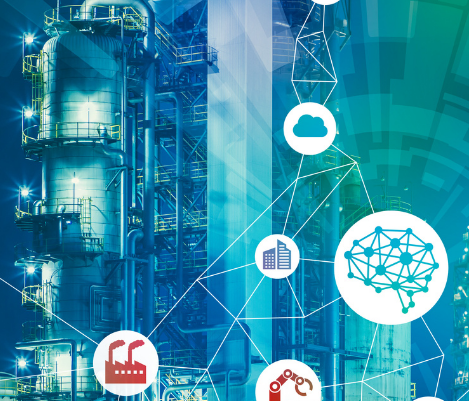
Most likely every manager of an industrial enterprise wishes to improve production quality, optimize production line operation and energy consumption, and anticipate machine and technology failures before they cause costly downtime. This goal can be achieved by analysing relevant data from machines and technologies.
Undoubtedly, working with collected data has a great potential to boost productivity and quality and optimize costs; however, these benefits can only be achieved by enterprises that can effectively collect and store data for further analysis. For this, they need a solution with a corresponding architecture at the IT level (data storage and data processing), the operational technology (OT) level (data capture), and the level of data transfer between OT and IT.
Most industrial enterprises already have some experience with data collection. They usually record some production or assembly process data, such as the start and duration of the production cycle and the materials or semi-products used in the process. This gives enterprises an accurate overview of their stock of raw materials and parts and of the quantity of products produced, but they usually do not monitor production parameters that may affect production quality or continuity. This includes sensing physical parameters during production or assembly – such as temperature, pressure, flow, and vibration. An analysis of these parameters allows for production optimization and the identification of the need for maintenance intervention, thus preventing unexpected downtime.
Collecting this necessary data is not always easy, and this may be due to various reasons: for example, some older machines and technologies may not be equipped to provide the necessary data. Newer machines may be able to do this, but often only in a proprietary format owned by their manufacturer. In other cases, data collected from production and assembly processes is only retained for the duration of the process and is no longer available for subsequent analysis. This results in disconnected islands of temporarily available data, meaning that production managers are unable to get a comprehensive overview of the production process and are thus unable to analyse the source of problems. They are also unable to identify energy losses or consumption peaks which would allow them to do things like avoid penalties for overdrawing or optimize contracts with energy suppliers.
Another obstacle may be an outdated IT infrastructure. Outdated databases are unable to store large volumes of production data, and they do not allow for the quick and efficient querying and analytical processing of such data. If an enterprise wants to have data available for production quality improvement, predictive maintenance, and energy management, it needs to have a universal technology architecture that can collect and store data from different systems, machines, and technologies. This is a prerequisite for later data analysis and evaluation as a basis for management decision-making.
To achieve the above, enterprises deploy Industrial IoT (IIoT) solutions. In many cases, it is necessary to connect machines (OT) with the world of data storage and processing (IT). An example of such a connection is the use of OPC UA, which stands for Open Platform Communication Unified Architecture. It describes the communication, communication protocol, and architecture that has been designed for industrial automation. An OPC UA server, such as KEPserverEX, functions as a communication hub between the machines in operation and the IT components of the solution, enabling proprietary systems and devices from different manufacturers to communicate. This then leads to the deployment of modern industrial Internet of Things solutions (IT + industrial OT = IIoT).
Such solutions allow data collection from virtually any system, sensor, or device. The data is then routed to a database, such as Elasticsearch, which is capable of long-term data storage (rather than just storing it for the duration of the production cycle) and, most importantly, which provides scope for quick and efficient querying. This creates the prerequisites for subsequent analytical processing and data visualization, such as in the Grafana open-source tool.
For most industrial enterprises, an open architecture based on the above solutions, designed by Soitron specialists, is a generational leap forward in terms of their ability to collect and use data. Moreover, the ability to replace hardware components with software and the use of open-source software not requiring any paid commercial licences make this a highly cost-effective solution.
The single universal architecture can be used to collect and analyse production process data (such as temperature, pressure, liquid and gas flow rates, vibration, and power consumption) which may have a major impact on product quality and durability. At the same time, it can be used to predict machine failures; make maintenance more efficient; optimize energy, gas, compressed air, and water consumption; improve industrial safety; and make the system ready for any future application using machine learning and artificial intelligence technologies.
We are in the process of finalizing. If you want to be redirected to our old version of web site, please click here.